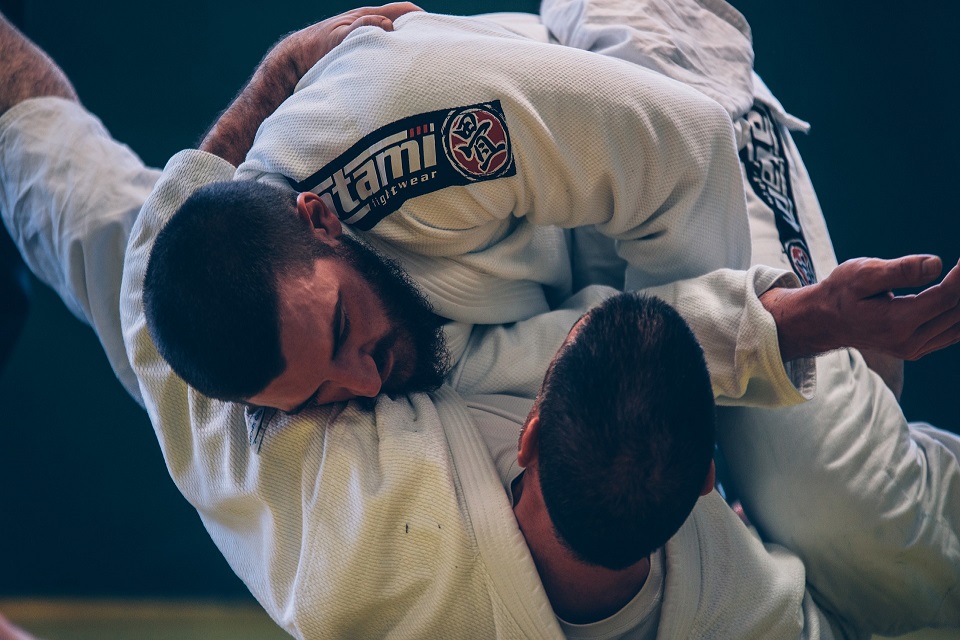Brazilian Jiu-Jitsu (BJJ) is a unique form of martial arts that focuses on grappling. It was developed in 1920 by Oswaldo, Carlos, George, Gastão Jr and Hélio Gracie. As opposed to Japanese Jiu-Jitsu that is customised for real-life combat, Brazilian Jiu-Jitsu is used for sport.

The objectives of BJJ are grounding an opponent, controlling them and gaining a dominant position. Submission through chokeholds and joint locks are also primary focuses.
If you are keen on learning BJJ, four key Brazilan Jui-Jitsu skills are amazingly transferable. Your entire journey in BJJ will boil down to these techniques.
Bridging and shrimping
These are two fundamental movements that both amateurs and professionals in BJJ practise.
Bridging assists fighters in escaping the mount position and side control. Although simple, the technique takes time to master. It involves pushing your feet off the ground to initiate an upward thrust of the hips. The movement is predominantly used as a defensive maneuver, but fighters can use it for passing attacks and submission.
Shrimping serves the same functions as bridging: escape from side control and mount position. In addition, however, you can use this movement to retain the guard position and create space for sweeps and submissions. Shrimping is executed by turning your side and pushing away to create distance between your hips and the opponent.
Gripping
When it comes to BJJ, you can only fight if you can grip. An effective grip has three fundamental components:
- Strength
The strength of your hands and fingers determines your grip strength. Unfortunately, the process of acquiring power takes years. This is due to the number and size of the hand muscles.
Nonetheless, you can engage in supplemental training to expedite the process. For example, use grip-strengthening gadgets to improve your strength and try out activities focused on gripping maneuvers such as rock climbing.
Although the strengthening process is slow, the effect on your grip is worth the training.
- Efficiency
Strength without efficiency is useless. Efficiency focuses on using the right amount of power for different grip maneuvers. Too much force will cause quick fatigue, while too little strength will limit your grip. Finding the right amount of strength to execute requires a lot of practice.
- Where to grip
You will not fulfil your objectives if your grip is incorrect. Accurate positioning allows you to generate enough leverage to complete a maneuver successfully.
Submissions
The submissions are the highlight of any BJJ class. They are flashy and effective in winning matches. Nonetheless, you need some finesse to execute the submission techniques properly. Here are some essential submissions:
- Triangle choke
You have probably seen this maneuver in your favourite fight movie. The submission is learnt early in martial arts, but you will spend the rest of your journey refining it.
The setup is the most challenging phase, but you can break it down into simple moves. Once your opponent is in submission, you only have to be patient.
- Kimura
This is a versatile weapon in Jiu-Jitsu. It’s easy to execute and provides an anchor point to follow your opponent wherever they transition.
There are other complex submission maneuvers, but they need advanced training.
Sweeps
Sweeps allow you to transition from a defensive posture to an attacking position quickly. Using the best lightweight BJJ Gi will help you to transition to an attacking position smoothly. As a result, they are fundamental tools in any fighter’s arsenal.
The pendulum and Kimura sweeps are the most basic movements but profoundly affect amateur and professional matches.
Brazilian Jiu-Jitsu has simple, unique techniques that make it an excellent sport for anyone interested in martial arts. Learning is easy; you only need to get the basics right.



